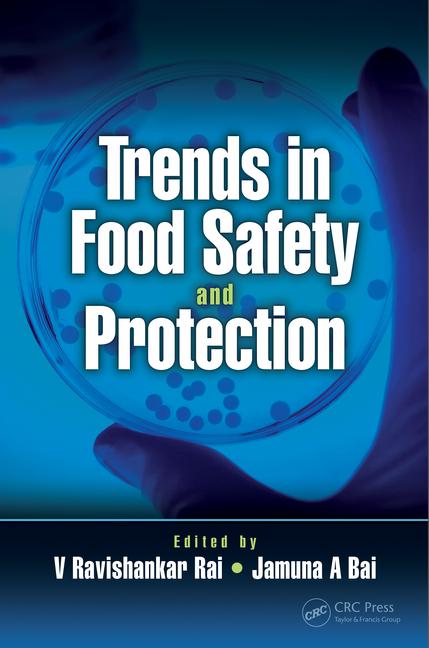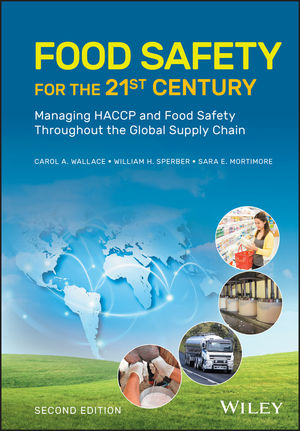Food Safety Challenges in Foodservice Environments

Foodservice establishments are often linked to foodborne illnesses and outbreaks that are triggered by inconsistencies in safe food handling practices and behaviors. Maintaining the safety of food in foodservice establishments can be challenging because food safety issues can arise at any stage of food receipt, storage, preparation, or service. The best way to reduce risk factors for food contamination is to demonstrate consistency in implementing, monitoring, and enforcing food safety-focused functions and operations.
Specification Buying and Receiving Controls
Inconsistencies in specification buying and receiving clerks failing to follow Standard Operating Procedures in receiving and inspecting food supplies can jeopardize the safety and quality of raw materials and ultimately the food served. Another area of concern is receiving food supplies from vendors at inopportune times that do not allow for adequate inspection and timely storage. This could have a direct impact on the safety of raw materials that require time and temperature control.
Cooking, Serving, and Storing Food
It is essential to cook, serve and store food at appropriate temperatures and keep food out of danger zone (40 ºF to 140 ºF) where harmful pathogens thrive and render food unsafe to eat. Inadequate cooking is one of the most common causes of food poisoning in foodservice establishments. Pathogens can survive if food is not cooked to the proper temperature, resulting in foodborne illnesses. Chefs must be mindful of cooking food to safe minimum temperature (145 ºF to 180 ºF; varies depending on the type of food) and check with a clean and sanitized probing thermometer to ensure that minimum internal temperature has been reached. Microwave cooking creates cold spots in food that increases the risk of microbial contamination, particularly when large foods are not turned upside down or stirred halfway through the cooking process. Before placing food, chafing dishes must be preheated to the recommended temperature, or the food will fall into the danger zone. In buffets, when chafing dishes are not in use, the lids must be held closed and food stirred periodically to ensure uniform heat distribution that is required to maintain recommended temperature. Cold buffet foods such as salads must be held on ice to maintain a safe minimum temperature. To maintain safe temperature levels, it's critical to check the temperature of hot and cold holding units frequently and at regular intervals. Cooling food is frequently the most crucial step in food safety. Cooked hot food not intended to serve immediately must be cooled to recommended temperature before refrigerating. Combining hot cooked and cold foods is another practice that provides an atmosphere conducive to pathogen growth. Contamination is a possibility when food is stored in a container that is not its original packaging and is not clean. Using newspapers for packing and lining food storage containers is a significant food safety hazard because of the risk of toxic chemicals from dyes migrating into food and contaminating it. Food must always be kept in food-grade plastic containers because certain metals such as copper and brass react with acidic foods. Another cause of contamination that must be avoided is the use of cardboard containers to store cooked food.
Cross-Contamination Risk
Cross-contamination is a significant concern in foodservice establishments because it is one of the leading causes of food poisoning. Foodservice facilities must be constructed in a way that facilitates the flow of processes and events in a linear fashion to avoid pathogen transfer from employee to employee, employee to the customer, and from one area to another. There is a risk of pathogen transfer when food preparation areas are close to other areas such as raw material storage, kitchen stewarding, butchery, employee zones, and housekeeping storage. Handwashing is essential in preventing food contamination and is one of the most significant factors in preventing food poisoning. Infrequent handwashing when handling food or washing hands in an unhygienic manner increases the likelihood of cross-contamination. Surfaces that come into contact with raw meat should be washed and sanitized before being used to prepare other foods to minimize the possibility of pathogen transmission. Another common mishandling that augments cross-contamination risk is cutting raw meat and ready-to-eat (RTE) foods with the same chopping board or knife and storing raw meat near RTE and other foods.
Personal Hygiene
Employees are the most common source of food contamination because they carry pathogens (norovirus, Escherichia coli, and hepatitis A) that can be accidentally transmitted to food by unsanitary food handling practices and behaviors. There is an exposure to food safety hazards when food handlers are not committed to process controls and a high degree of personal hygiene. Food protection must be at the forefront of employee’s minds, and they must see it as a social duty. Wearing unclean uniforms, working without personal protective equipment (gloves, hairnets, aprons etc.), not maintaining good hand hygiene, and handling food while sick can all endanger food safety. Employees are often seen having casual approaches to food safety behaviors and fail to apply lessons learned in food safety training. Managerial monitoring and enforcement are crucial to address this performance issue as well as to ensure the long-term viability and success of training programs. Individuals with positional control are more likely to engage in food safety-related activities than those lower in the hierarchical structure. Food safety culture has been prioritized by companies by integrating it into their mission but driving employee engagement and aligning them with the mission remains a challenging task.
Cleaning and Sanitation
Cleaning and sanitation are essential in any food service operation to keep all surfaces clean and germs at acceptable levels and reducing the likelihood of pathogens or other contaminants spreading from one dirty surface or piece of equipment to another. Both are intertwined and go hand in hand. The most common cleaning and sanitation violations in food service facilities that jeopardize food safety are irregular cleaning and sanitation and substituting cleaning and sanitizing with each other. Even if surfaces appear clean, they harbor invisible germs that spread diseases, so sanitizing after cleaning is essential. Improper loading of dishwashing machines, using inadequate quantities of chemicals and failing to change chemical solutions between uses are few other common unsafe practices that compromise the efficacy of cleaning and sanitation programs aimed at ensuring food safety.
Waste Management Practices
Establishing and implementing good waste management practices is important for reducing food safety threats and facilitating environmental hygiene, one of the prerequisites to food safety. Garbage cans should be emptied regularly such as after each meal or as required. Sizing and installing waste bins without considering estimated volume, nature, and ideal location of waste collection points could put food safety at risk. It is strongly advised to keep a sufficient distance between waste sources (e.g., kitchen, storage, etc.) and disposal sites to discourage pest activity and protect against food safety hazards.
Foodservice operators are legally obligated to prevent public health hazards and protect the health of the population. Senior leadership must take a proactive approach to food safety, designate individuals to oversee food safety processes, and reinforce safe food behaviors. It should be remembered that consistency is required in all aspects to ensure food safety. Driving employee engagement and encouraging employees to consistently follow safe food handling principles is pivotal, as employees are the first line of defense for food safety. Furthermore, the current situation necessitates collaboration among all supply chain participants (farmers, processors, distributors, retailers, caterers, and end consumers) to ensure the safety of food from farm to fork. After all, food safety is a shared responsibility.
Dhruv Kishore Bole is a hospitality and food safety specialist with qualifications in hotel management and food safety and quality management systems. He has extensive experience spanning 12 years in food operations and training.
Looking for a reprint of this article?
From high-res PDFs to custom plaques, order your copy today!









